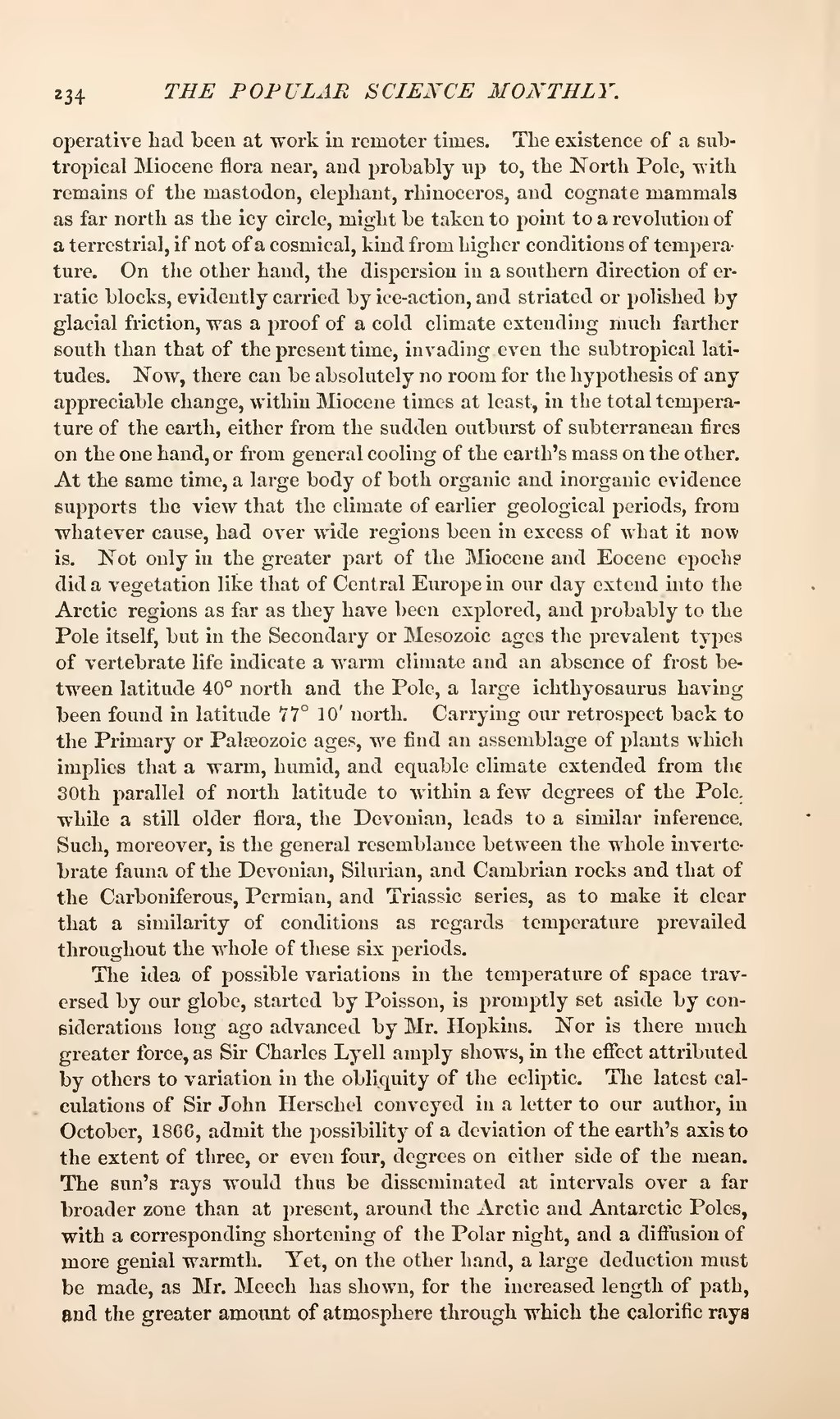operative had been at work in remoter times. The existence of a sub-tropical Miocene flora near, and probably up to, the North Pole, with remains of the mastodon, elephant, rhinoceros, and cognate mammals as far north as the icy circle, might be taken to point to a revolution of a terrestrial, if not of a cosmical, kind from higher conditions of temperature. On the other hand, the dispersion in a southern direction of erratic blocks, evidently carried by ice-action, and striated or polished by glacial friction, was a proof of a cold climate extending much farther south than that of the present time, invading. even the subtropical latitudes. Now, there can be absolutely no room for the hypothesis of any appreciable change, within Miocene times at least, in the total temperature of the earth, either from the sudden outburst of subterranean fires on the one hand, or from general cooling of the earth's mass on the other. At the same time, a large body of both organic and inorganic evidence supports the view that the climate of earlier geological periods, from whatever cause, had over wide regions been in excess of what it now is. Not only in the greater part of the Miocene and Eocene epochs did a vegetation like that of Central Europe in our day extend into the Arctic regions as far as they have been explored, and probably to the Pole itself, but in the Secondary or Mesozoic ages the prevalent types of vertebrate life indicate a warm climate and an absence of frost between latitude 40° north and the Pole, a large ichthyosaurus having been found in latitude 77° 10' north. Carrying our retrospect back to the Primary or Palæozoic ages, we find an assemblage of plants which implies that a warm, humid, and equable climate extended from the 30th parallel of north latitude to within a few degrees of the Pole, while a still older flora, the Devonian, leads to a similar inference. Such, moreover, is the general resemblance between the whole invertebrate fauna of the Devonian, Silurian, and Cambrian rocks and that of the Carboniferous, Permian, and Triassic series, as to make it clear that a similarity of conditions as regards temperature prevailed throughout the whole of these six periods.
The idea of possible variations in the temperature of space traversed by our globe, started by Poisson, is promptly set aside by considerations long ago advanced by Mr. Hopkins. Nor is there much greater force, as Sir Charles Lyell amply shows, in the effect attributed by others to variation in the obliquity of the ecliptic. The latest calculations of Sir John Herschel conveyed in a letter to our author, in October, 1866, admit the possibility of a deviation of the earth's axis to the extent of three, or even four, degrees on either side of the mean. The sun's rays would thus be disseminated at intervals over a far broader zone than at present, around the Arctic and Antarctic Poles, with a corresponding shortening of the Polar night, and a diffusion of more genial warmth. Yet, on the other hand, a large deduction must be made, as Mr. Meech has shown, for the increased length of path, and the greater amount of atmosphere through which the calorific rays
